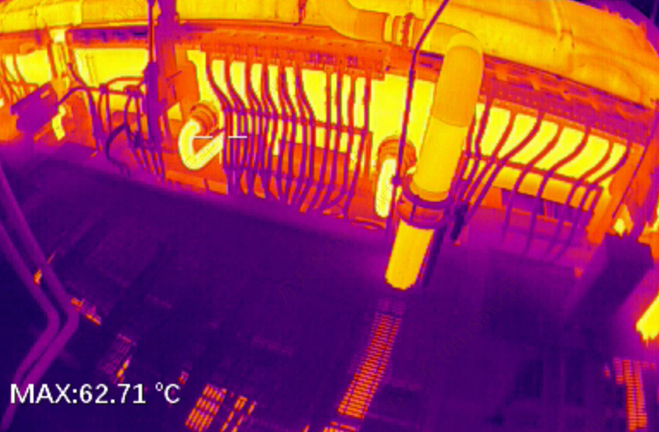Infrared thermography has a wide range of applications in various industrial fields, playing a crucial role in several key areas. Below are some specific industrial thermography applications:
1. Industrial Thermography for Equipment Fault Detection and Maintenance
·Overheat Detection: Infrared thermography detects overheating or uneven temperature distribution in equipment, allowing for early identification of potential faults or damage. For example, in power plants, petrochemical facilities, and manufacturing plants, infrared thermography helps prevent accidents and enhances operational efficiency by monitoring critical equipment.
·Predictive Maintenance: Industrial companies can regularly scan key machinery using infrared thermography devices to identify hotspots or abnormal temperature zones. This enables timely repairs or part replacements, avoiding costly downtime and ensuring continuous production.
2. Industrial Thermography for Product Quality Inspection
·Non-Destructive Testing: Infrared thermography is widely used for non-destructive testing (NDT) of product quality. Manufacturers can detect internal defects or inconsistencies by analyzing the thermal radiation characteristics of products under different temperatures. This is particularly useful in plastics, electronics, and construction material industries.
·Temperature Distribution Analysis: Infrared thermography provides real-time data on temperature distribution during the manufacturing process, allowing operators to adjust parameters and ensure product quality.
3. Industrial Thermography for Safety Monitoring
·Fire Prevention: In flammable and explosive industrial environments, infrared thermography continuously monitors for abnormal temperature changes, providing early detection of fire hazards. The system can raise alarms when a high-temperature point or heat source is detected, allowing personnel to take immediate action.
·Personnel Safety Monitoring: In high-temperature or hazardous work environments, infrared thermography can monitor workers' body temperatures, helping to prevent heatstroke and other occupational health risks.
4. Industrial Thermography for Energy Management
·Energy Efficiency Assessment: Infrared thermography can evaluate the energy efficiency of industrial equipment by measuring heat loss and energy usage. This enables companies to develop energy-saving strategies and reduce operating costs.
·Thermal Leak Detection: Infrared thermography detects water or gas leaks in buildings and industrial facilities, helping to improve insulation and reduce energy waste.
Guide Sensmart's Industrial Thermography Equipment
Guide Sensmart's industrial thermography equipment offers high-resolution imaging, enabling accurate detection of equipment overheating, leakage, and product quality issues. With easy-to-use interfaces and robust functions, these tools are invaluable for predictive maintenance, safety monitoring, and energy management. Guide Sensmart's thermography equipment and solutions provide a proactive approach to identifying potential problems, reducing downtime, and improving overall operational efficiency in various industries.
Infrared thermography has a wide range of applications in the industrial sector, covering various critical areas such as equipment fault detection and maintenance, product quality inspection, safety monitoring, and energy management. This versatile technology is increasingly being utilized to detect overheating, identify potential defects, enhance safety protocols, and optimize energy efficiency.
As the technology continues to advance, industrial thermography is expected to play an even more significant role in the industrial field, offering more precise diagnostics, improved efficiency, and proactive maintenance solutions. Its growing importance in predictive maintenance and quality control makes it an indispensable tool for modern industrial operations.













.svg)



_fuben.jpg)

